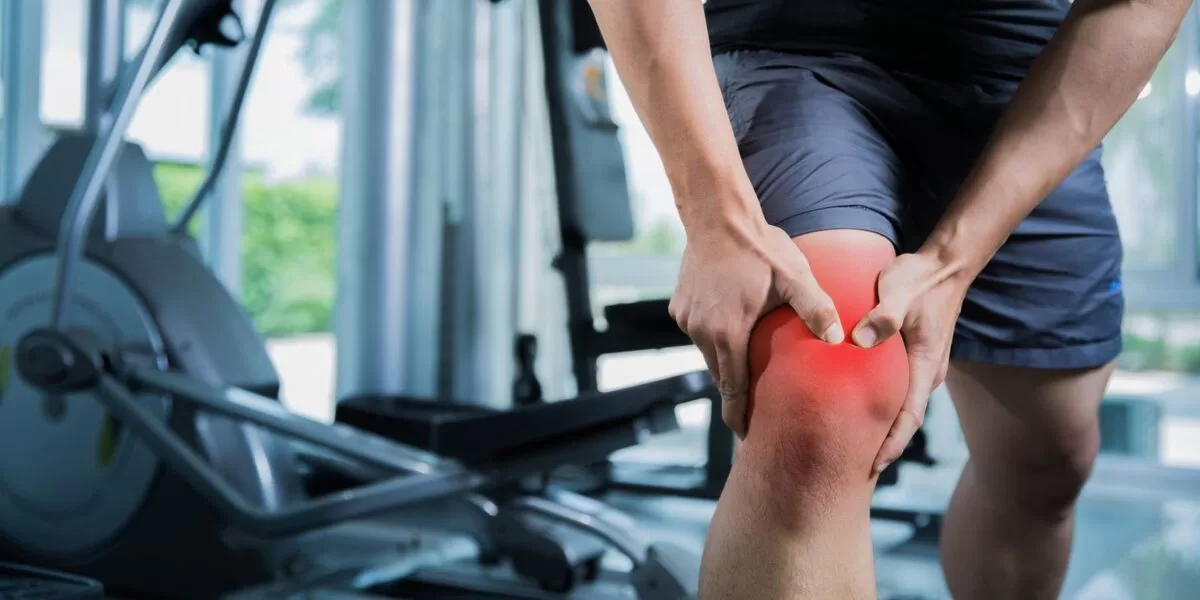How Can You Prevent Exercise Injuries and Stay Safe While Working Out?
To avoid exercise injuries, it’s important to train smart, not just hard. Here are key tips for a safer fitness journey:
Warm-up & Cool-down: Prepares your body for movement and helps reduce soreness.
Stretching: Increases flexibility and prevents muscle strain.
Listen to Your Body: Stop if you feel pain or discomfort.
Proper Technique: Use correct form and increase intensity gradually.
Hydration & Rest: Support muscle recovery and prevent cramps.
RICE Method: For treating minor injuries—Rest, Ice, Compression, Elevation.
Avoiding exercise injuries is all about preparation, awareness, and balance—fitness shouldn’t hurt!
In the health world or maybe on many gym walls, you might have seen the phrase “No Pain, No Gain”. Well, I have seen many people believe in it and tend to push their limits to achieve a better physique. Sadly, this strategy can lead to some serious injuries and can keep you away from exercise for many weeks or even months. There are many ways that you can keep exercising without any pain. In this blog, we will further look into the most common exercise injuries one might get, ways to prevent them, and why it is important to look after the signals your body might have been sending you.

Understanding Exercise Injuries
Before learning about how to prevent injuries, it is essential to understand about exercise injuries. From some minor sprains to fatal bone fractures, there are many exercise injuries that one might get. The most common mistakes people might make are overtraining, lifting heavy weights without any supervision, and if injured not giving proper time for recovery. Knowing the signs of injury like swelling, muscle cramps, and persistent pain can help you to take action before it becomes a serious problem.

How to Avoid Exercise Injuries
Warm-Up Exercises
Warm-up is the blessing that you can give to your body before working out, Warming up prepares your body for the workout by increasing the blood flow to the muscles and it also helps enhance flexibility. There are some ways that you can incorporate into your exercise routine which can help your body to warm up and prevent injuries as well. Some of them are mentioned below.
- Stretchings: Gestures like swinging your arm in a circular motion in a clockwise and anti-clockwise manner, leg swings, hip rotations, and many more can help increase the blood flow, thus improving the range of motion which leads to fewer injuries.
- Little cardio: Indulge in little cardio is one of the best ways to warm up your body, you can always start your exercise routine by doing a little jogging or walking on the treadmill or maybe by cycling which will help you keep your body in motion, and get your muscle ready for the main exercises and actions
Cool-Down Exercises
To make your body cool down after an exercise session is as important as warming up. A proper cool-down exercise helps your body to come back to its resting state. It happens because while exercising we tend to have a higher heartbeat and pulse rate, so cool-down exercise helps in body to come back to normal pulse rate. To achieve this spend at least 5-10 minutes after your workout in less intensive activities like walking or some stretching. this might also help in stiffness and soreness one might feel after an intense workout.
The Role of Stretching
Stretching should be an unchangeable regimen in your workout sessions. Doing hard and soft stretches after a workout can help in reducing the chances of injuries. Stretching improves flexibility, increases blood flow to your muscles, and helps your body recover.
Tips for Effective Stretching:
- Hold static stretches for 15-30 seconds after your workout.
- Don’t jump; stretching should be a slow and controlled process.
- Focus on major muscles and joints, especially those you want to work on during your sessions.

Listening to Your Body
One of the best ways to prevent any injuries while working out is to always listen to the signals your body might have been sending. It is ok to feel tired, out of breath, or maybe a little discomfort while working out. Ignoring these signs can lead to more serious injuries that might have not been prepared for. So, to avoid this always take care of your body, listen to it, and get yourself in the right way of exercises to reduce the risks of injuries.
How Frequent Should We Exercise?
Research suggests that working out 4-5 days a week is just right for normal people. We understand it might not be right for the athletes, But, they likely have their trainer with them all the time.
A proper exercise schedule and resting a few days a day a week give your body time to recover, which is important for muscle growth and reduces the chance of injury. Make sure to know that, rest days are also as much as important as your workout days as they give your muscles a proper time to recover and grow even stronger.
Things to Do When You Are Accidentally Injured
Sometimes, there is no way that you can prevent accidents completely even after taking proper precautions. If you have injured yourself it is important to take a first aid immediately and let your injury recover. One of the most common ways that many people practice while getting injured is the RICE method:
RICE Method
- R: Rest the injury. Avoid exercises that cause pain or discomfort to give your body time to heal.
- I: Ice the injury. Applying ice to the injured part for 15-20 minutes every hour after the injury. This can help lessen swelling, bleeding, and inflammation.
- C: Compression. Use a compression bandage to help reduce the swelling. Be careful not to wrap it too tightly, as this can slow down the blood circulation.
- E: Elevate the injury. Elevate your injured area on a cozy pillow; this little lift of an injured arm and leg can make a big difference in reducing swelling!

What to Do to Avoid Exercise Injuries
To minimize the risk of injury, consider the following tips:
- Focus on Form: Proper exercise technique is key for preventing injuries. If you’re not sure about your form, consider working with a personal trainer or attending a class.
- Gradually Increase Intensity: Avoid doing high-intensity workouts without building a proper foundation. Increase your weights, intensity, and duration of workout gradually.
- Mix It Up: Engage in various exercises to prevent overuse injuries. Indulge in high-intensity Cross-training is one of the ways to keep your routine exciting and engaging.
- Stay Hydrated: Keeping your body well hydrated also plays an important role in recovering the injury. Drinking less water can be one of the reasons for muscle cramps and restlessness, and it can also increase the risk of injury.
Keeping your body hydrated can be beneficial in many ways. Learn about the importance of hydration in the body in our other blog.
Conclusion: Avoid Exercise Injuries
Staying fit doesn’t mean that you have to be in constant pain and injuries. By listen what your body wants and taking the time to warm up, cool down, stretch, you can achieve a safe and effective exercise routine. Make sure to know that, fitness is a journey! So to value your health is one way to love your body, it can also help in properly achieving your goals. So, ditch the “no pain, no gain” phrase and embrace the right way to fitness. Trust me, Your body will thank you!







